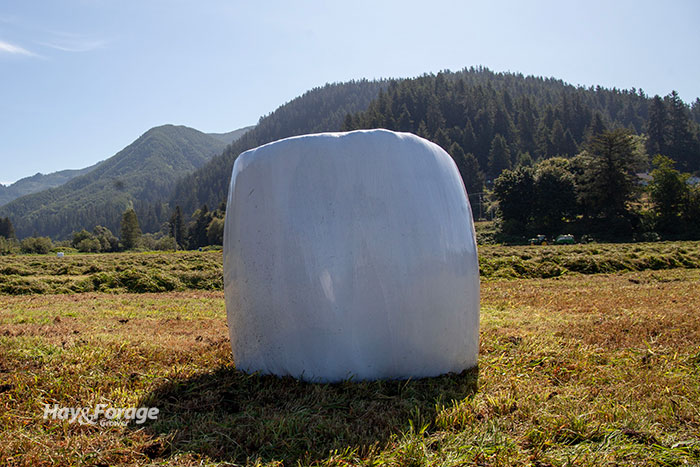
Making hay in the Upper Midwest can be a game of chance. Receiving rain at any point during the drying period can negatively affect forage quality, and this excess moisture can raise the risk of heating, mold development, dry matter loss, and spontaneous combustion in bales.
One way to work around uncertain weather conditions is to bale and wrap silage. That said, forage moisture is still a key component of fermentation and aerobic stability in this type of feed. Moreover, using acid preservatives like propionic acid have the potential to prevent heating in bales during and after storage, but application rates and circumstances vary.
In an article from the Midwest Forage Association’s Forage Focus newsletter, Matt Akins and Wayne Coblentz with the U.S. Forage Research Center share results from a study in Marshfield, Wis., where silage was baled at two moisture levels and treated with different rates of propionic acid before wrapping. The scientist and retired scientist with the USDA Agricultural Research Service explain how these factors can affect forage quality, fermentation, and feedout practices.
Research results
In the study, researchers evaluated an alfalfa-orchardgrass mix that was cut and received an unexpected rain after two days of drying. The wet hay was then dried down to either 44% moisture or 52% moisture, which were considered dry and ideal moisture levels for baled silage, respectively.
After forage was baled into round bales that were 4 feet in diameter and 4 feet wide, the researchers applied propionic acid at three rates: 0.13%, 0.44%, and 0.80% wet bale weight. Bales that were not treated with propionic acid were considered the control groups. Then the researchers weighed bales and collected core samples before individually wrapping them with seven layers of stretch film plastic and storing them for 242 days.
The researchers collected data on bale surface and core temperatures to measure aerobic stability for 11 days after opening the plastic wrap. They discovered initial moisture content did not impact heating in forage as bales in both treatment groups showed similar average and maximum surface temperatures and heating degree days.
On the other hand, using propionic acid did impact heating in forage after the scientists unwrapped the bales. “Acid-treated bales had lower mean, maximum, and final bale surface temperatures compared to 0% acid baled silage,” Akins and Coblentz write. “This response to acid preservative rate had a linear pattern for maximum and final surface temperatures, with 0.44% acid bales having lower temperatures than 0.13% acid bales, and only a small difference between 0.44% and 0.80% acid rates. Core temperatures followed similar patterns to the surface, with lower temperatures for acid-treated baled silage.”
Forage quality and fermentation
Baled silage that began at 44% moisture had slightly lower fiber-bound protein and lignin concentrations than baled silage that started at 52% moisture, which translates to higher total digestive nutrients (TDN). “This may be explained by additional wilting time, allowing greater proteolysis of the fiber-bound proteins prior to harvest,” Akins and Coblentz state. With that said, there were no significant changes in nutritive value of forage with varying propionic acid application rates.
The researchers found silage baled at 52% moisture had a lower forage pH and produced more lactic and acetic acids during storage than silage baled at 44% moisture, thus achieving better fermentation. Initial forage pH declined linearly when more propionic acid was applied to both dry and ideal moisture bales; however, total acid concentrations were lower in forage that was treated with propionic acid.
In summary, initial bale moisture had the greatest influence on nutritive value and fermentation, but it did not impact poststorage aerobic stability. Akins and Coblentz suggest applying propionic acid at 0.44% wet bale weight may help prevent heating if forage will be exposed to oxygen for an extended period after unwrapping baled silage. Otherwise, using acid preventatives might not be economical if bales are fed within one to two days of opening the plastic wrap.

